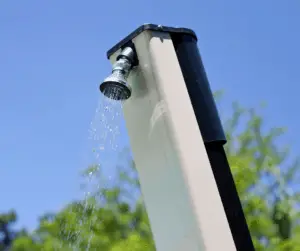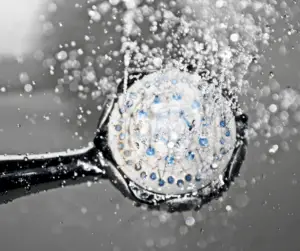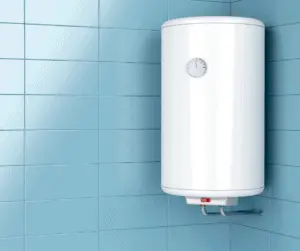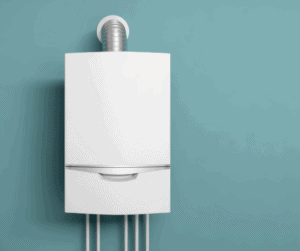If you’ve been looking for an excellent way to shower on your homestead, determining the best way can be challenging at first, but we’ve got you covered.
We all use a shower, but most of us have the luxury of jumping into the ordinary shower we’ve all come to know throughout life.
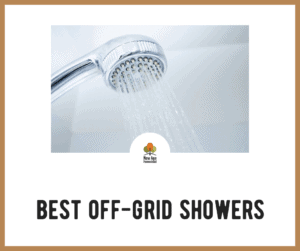
Access to city water is a luxury in itself, too. However, showering on a homestead brings a few new challenges to the table.
For starters, there is no city water, and the water that you do have is finite, so we must take a few steps to make sure the limited water lasts.
We can do this by choosing low-flow showerheads. Plus, there are plenty of other factors we should look into as well.
I’m going to cover the best shower systems that are great for those of you who live off-grid while also making sure they’ll work with the typical homestead setup.
Best Off-Grid Shower Systems : Top 3 Systems
Solar Shower
If you immediately want to opt for an option that will provide warm water, then you may like the idea of a solar shower.
They are straightforward in design and can provide a way to get warm water, even without electricity.
As the name suggests, a solar shower warms the water by using solar to heat the water. It’s not a solar panel, though.
It works by placing a solar collector on the roof, which is warmed by sun rays. Often, the solar collector is 10-25 gallons; this way, the water can be heated quickly.
Try not to have a large solar collector because these tend to take much longer to actually warm-up.
If you have enough sun during the winter, this option is still viable, but it will depend on your specific setup.
You should use copper as the piping, as it conducts heat much better than a regular PVC pipe does. The copper can be run through the solar collector, which will result in even warmer water.
Barrel Shower
Even if you have a water barrel that is used for collecting rainwater, unless you have a water pump, you’ll need to look at ways that provide usable water pressure.
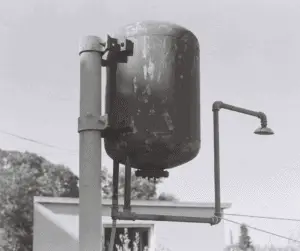
If you take a bucket, such as 50 gallons, and raise it to roof level, then you will have enough pressure. I’d recommend placing the bucket at least 15 feet high and near the shower.
If possible, use a black-colored barrel, which will help conduct the sun rays and warm the water. I’ve adopted this a handful of times, and it worked surprisingly well.
The key here, though, is to place it high enough. Most showerheads typically require around ten or more pounds of pressure to operate smoothly.
I’d suggest finding one that only needs a couple of pounds at most to function correctly.
This will help imitate a higher water pressure, although you should keep in mind, the more water in the barrel, the more pressure.
Regular Pump Shower
If you don’t feel like messing around and installing a water barrel fifteen feet above shower level, then a simple pump shower may be best.
There are several available, but I’ve used a simple weed sprayer as a placement for a real pump shower. Weed sprayers work by using a handle, which pumps air into the canister.
This creates intense pressure, resulting in a shower that has a higher water flow.
It’s not the easiest to use while showering, but if you do a little DIY and remove the sprayer, then hook it to a small shower head, you’ll have a pressurized shower.
You’ll have to pump air into the canister, though. A huge benefit to this is if the water is kept inside, it’ll at least be room temperature.
It could even be placed near a wood-burning stove to keep it warm.
I’d recommend getting a quality one, as the cheaper ones will not build up pressure as efficiently as the higher priced ones.
How To Warm The Water Off-Grid
Use A Wood-Burning Stove
If you’re anything like myself, then you prefer a good, warm shower. I give huge props to those of you who can stand cold showers. You’re a champion!
A great way to warm up the water is by using a wood-burning stove. It’s easy to do, and since a wood-burning stove is great to have regardless, it couldn’t work out any better.
To do this, you’ll need a copper pipe. Connect one end to the water source, or T it into an existing line.
Next, run that copper line to the wood-burning stove, wrap the copper around an area of the stove that gets warm, then run it to the shower.
This way, the water will warm up almost instantly as soon as it goes through the copper wrapped around the woodstove.
The water can get boiling fast, though, so be careful and make sure you test out the temperature before merely jumping into the shower. Turning on the cold water can quickly solve this, though.
An Energy Efficient Water Heater
There are several types of water heaters, including regular types and inline water heaters.
If you have an energy source on your homestead, it’s likely finite, so you’ll want to make sure whichever water heater you go with is proper for the battery setup you have if any.
Typically, inline water heaters use much less energy because there is no need to warm up the water to maintain its temperature, as ordinary tanks do.
Plus, in-line water heaters warm-up very fast, providing instant access to hot water.
They are usually placed near where the faucet or showerhead is, but they can be placed anywhere you like.
Ordinary water heaters will work just fine, but you should consider finding a small one that’s Energy Star approved to avoid using up your power storage.
I’d only recommend an electric water heater, though, if you have a stable energy source. It will only become a pain if you don’t, so think about this before making any moves.
Propane Water Heater
A propane water heater is by far one of the best options to have hot water on a homestead.
Because a wood-burning stove and an electric heater may not be the most suitable, this will provide a great, easy, and all-around dependable source for hot water.
Water heaters that are heated by propane work in similar ways that ordinary water heaters do. It does the initial warm-up and adjusts its flame as the water drops or rises in temperature.
A huge plus about propane water heaters is that they warm up incredibly quickly.
Not to mention, most propane water heaters are extremely reliable and long-lasting due to their widespread usage and testing.
The only negative is that it’ll use up fuel, but you can easily place a large tank on your property and fill it up as needed.
Sure, it may cost a little upfront, but it’ll pay off in no time. Propane can also be used to cook and even keep your home warm, so it’s undoubtedly a multi-use fuel.
How To Get Enough Water Pressure
Elevation
The best way to have water pressure off-grid is by elevating it to the point it naturally pushes itself out of the storage tank.
This will provide an adequate amount of pressure if it’s high enough.
However, if the water storage tank is higher than the water source itself, the water will need to be pumped into the storage tank.
A pump defeats the purpose of using elevation to your benefits, which is why we recommend the following instead.
You could perhaps use a manual winch to lift the water storage tank onto an elevated structure; this way, it can be filled at ground level and placed on a formal formation.
Water Pump
There are several types of water pumps that can be used off-grid. If you have a stable energy source, an electric water pump will work great.
However, electricity isn’t always something you can afford to spare, so in that case, a gas-powered water pump may suit you best.
These will need to be powered on every time you use the water, but if you’d prefer, it can be used to pump water into the elevated water storage tank instead.
This way, the gas water pump only needs to be powered on infrequent occasions.
Tips For Showering Off-Grid
Opt For Natural Soaps
I’d recommend everyone use soaps that are natural, as if you use soaps with chemicals inside, it cannot be used for things like greywater or equipment washing. The substances could damage crops, paint and simply aren’t good for our earth.
Use Your Greywater
All of the greywater can be repurposed and used for watering the garden, washing tractors, and more. Plus, greywater is fantastic to use as toilet water, as using freshwater can use a lot of the water you have in storage, leaving you with much less freshwater.
Buy A Low-Flow Shower Head
Lastly, showering is undoubtedly going to use quite a bit of water, so to help combat this, you should buy a low-flow showerhead. This works by imitating high water volume, so you’ll save water without missing much of the pressure you’re used to.
Open Questions About Off-Grid Showers
Do I Need A Septic Tank?
If you’re not going to opt for an outhouse, you will need some sort of septic tank. In many cases, shower water can be directed back into nature by using runoff septic systems.
If you’re going to have a toilet in your home, a septic tank is necessary. In most cases, they are easy to build, as you’ll run the pipes, dig the hole, and place concrete in the bottom and sides.
Luckily, a smaller homestead doesn’t need a large septic tank, so this shouldn’t be a difficult task. If you want to use greywater, route the showers and sinks to the greywater tank.
How Much Water Will My Shower Use?
This widely depends, as the shower’s length and the type of shower head used all play a factor in how much water is used.
Typically, regular shower heads will use up to 3 gallons of water per minute, which is a lot. If you opt for a low-flow showerhead, it’ll use around a gallon per minute, or maybe slightly more.
You could consider only turning the water on when you need to rinse; this way, you can still shower but use considerably less water overall.
How Can I Save Water?
There are some feats you can do to conserve water aside from turning it off only when you need to rinse. For starters, you could simply wipe yourself down and shower every other day.
This way, you stay clean and save water by not showering every day. You may also consider saving the cold water that comes out of the showerhead instead of letting it go down the drain.
You can do this by placing a bucket in the tub, and because the water is still fresh, you could recycle it back into the main water supply if you have a sound filtering system.
Verdict
Homesteading has its challenges, and one of those is certainty showering. There are so many different types of showers, and some can quickly go through 25 gallons per session.
Saving water is critical here, so following the steps here will undoubtedly save you big time. Greywater is also essential to keep, as it has several uses, although it may need filtering first.
Plus, water pressure can be hard to obtain, which is why I’ve also covered this aspect. Whatever the case is, shorten your showers, use a low-flow showerhead, and recycle the water.
By following all of the steps here, you’re on your way to having a great, hot shower in no time. You’ll get used to conserving water after a few months; it’ll become second nature.
Also, you should verify with your local city hall to make sure you’re following the regulations regarding rainwater and greywater, as some areas are very particular about this.
